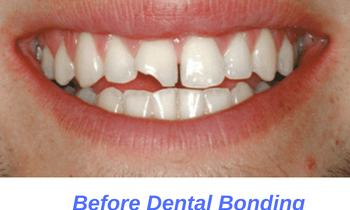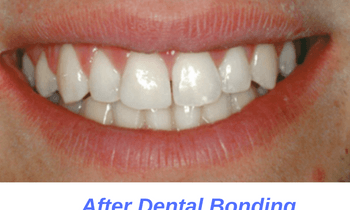Dental bonding is a natural-looking, white-colored restoration that is primarily used to repair damaged front teeth. Bonding is a cosmetic dentistry procedure that improves the appearance of your smile. Your dentist can repair chipped teeth, fractures, and other minor cracks using bonding. Bonding teeth is easy, convenient, and can typically be completed in a single appointment. Bonding material comes in a wide variety of shades so that your dentist can match your existing tooth color. Bonded teeth blend in seamlessly with natural teeth to become virtually indistinguishable.
What is tooth bonding used for?
Bonding is a simple and effective cosmetic dentistry procedure that enhances your smile. Dental bonding yields amazing results in minimal time with little to no discomfort. Bonding offers a fairly good solution to fixing broken or chipped front teeth. The most common alternative to bonding teeth is porcelain veneer treatment. While porcelain veneers look better and last longer than bonding, they are also much more expensive. Talk to your dentist to explore your different options. Schedule a consultation with a cosmetic dentist to see if bonding your teeth is a good solution to improve your smile.
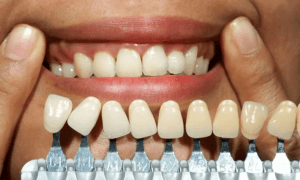
Dental bonding comes in a variety of shades to match your natural tooth color
Is dental bonding a good option for me?
Bonding is an effective way of repairing damaged front teeth. Bonding works very well for small to medium-sized tooth defects. There are plenty of benefits to bonding your damaged teeth, such as:
- Bonding is a simple process that is typically completed in a single session.
- Dental bonding yields great aesthetic results.
- The bonding material is safe, relatively durable, and beautiful.
- Dental bonding comes in a wide variety of different colors. This allows your dentist to match your damaged tooth color to the exact shade of your natural teeth for optimal aesthetic results.
Large Fracture
Dental bonding is essentially a white filling that is glued onto your teeth. As a result, bonding does not work very well for larger toothy defects. Placing a very large dental bonding leaves your tooth vulnerable to stress from bite forces which can cause your tooth to fracture. Additionally, large bonded restorations are likely to accumulate decay and stains. This means that you have to replace the bonded restoration every few years, sometimes even sooner! For larger dental defects, we recommended that you place a crown or porcelain veneer on your tooth instead. If you're not sure which option is best for you, schedule a consultation with a cosmetic dentist to decide which treatment option is best.
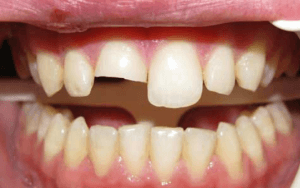
For larger fractures, it's recommended to place a crown or veneers instead of a bonding
High Esthetic Demand
Bonding works well when it comes to fixing individually broken teeth. However, bonding may not be your best option if your goal is to restore your smile. Dental bonding gets stained easily with coffee and tea. It also changes color over time. If you're looking to get a full smile makeover, we recommend porcelain veneers or ceramic crowns instead.
What is the process for bonding your teeth?
Bonding is among the easiest of all cosmetic dentistry procedures. Most bonding procedures are completed during a single appointment. Here is what you should expect when getting your tooth bonded:
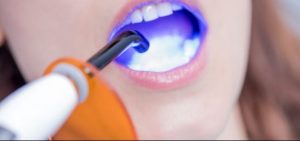
Often times tooth bonding procedure is completed during a simple 30 to 60-minute appointment
Cosmetic Consultation
Your first step is to schedule a consultation with a cosmetic dentist. During your consult, your dentist will evaluate the damaged tooth/teeth to see if bonding is a good option. If it's determined that bonding is indeed a good option, you can typically start your treatment right away!
Tooth Preparation
Most bonding procedures are performed during a single appointment. The whole process usually takes about 30 to 60 minutes. Your dentist will prepare the damaged tooth, apply etchant or adhesive, and fit the bonding material to your teeth. Once the bonding has been cured, your dentist will polish and trim the new restoration. Your dentist will make sure that you can properly chew and floss your new restoration. You will be given a mirror to evaluate the final results. Pay close attention to make sure that the color and shape of your bonded tooth is to your exact liking. If not, ask your dentist to modify the bonding until you're satisfied with the results.
Follow-up Appointment
Most cosmetic dentists want to see you back in a few weeks for a follow-up appointment. During this follow-up visit, your dentist will make sure that your bonded tooth is fully intact and functions well with the rest of your teeth. If necessary, your dentist will make adjustments to improve the fit of your bonded tooth. The followup appointment is usually a quick visit and its sole purpose are to make sure that everything looks good and you're satisfied with the final results.
